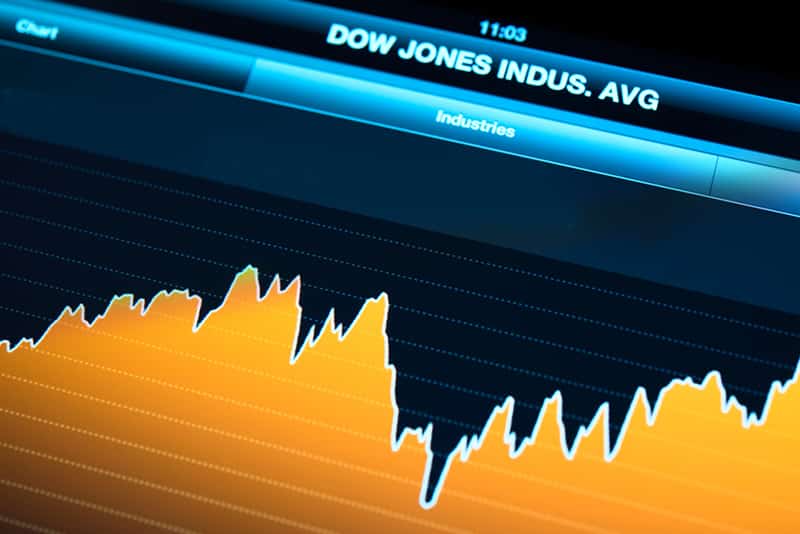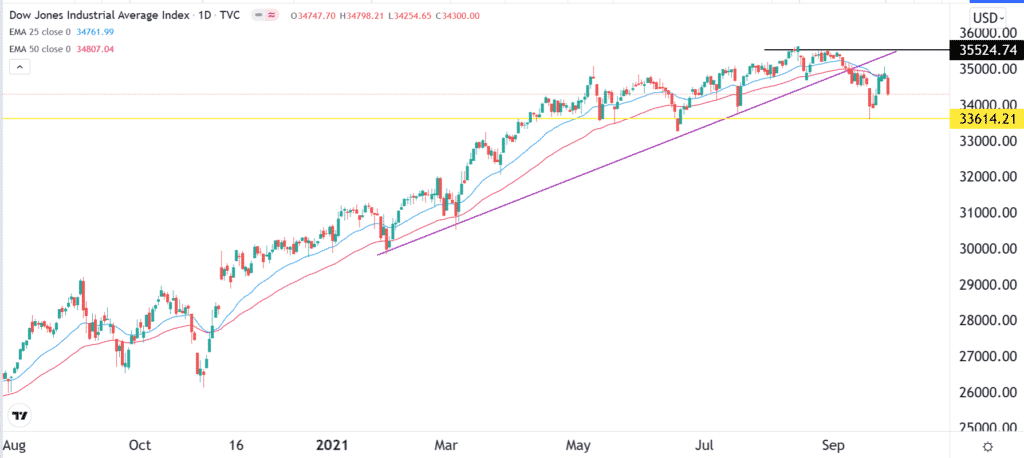
The Dow Jones index tumbled by more than 570 points on Tuesday as multiple fears pushed investors away from equities. The index dropped to $34,300, which was about 3.70% below its all-time high. Other indices like the S&P 500, Nasdaq 100, and Russell 2000 declined by more than 2%.
Fear rising in the market
The Dow Jones index retreated as a sense of fear engulfed the financial market. Indeed, the CBOE Volatility Index (VIX) jumped by more than 23% while the fear and greed index declined to the fear zone of 28.
There are several reasons why investors are fearful. First, there is a growing risk of a slowdown in China, the biggest economy in the world. Data published on Tuesday revealed that the country’s industrial profits declined in August. Industrial production has declined in the past few consecutive months.
The situation could worsen as China faces a major power shortage in key industrial profits. The jump in coal and natural gas prices has helped push the cost of production significantly higher. A slowing Chinese economy has implications for US equities because many companies make money in the country.
Second, there is a growing risk
of stagflation in the United States. Stagflation refers to a situation where inflation remains at elevated levels while economic growth slows. Recent data showed that the country’s inflation remained above 4% in August. Therefore, there is a possibility that this period of high inflation is not transitory as the Federal Reserve has been advocating.
Treasuries market
The Dow Jones index also crashed as US government bonds sold-off. The yield on the 10-year US government bonds rose to a three-month high of 1.55%. In the same period, the yield of the 30-year bonds rose to 2.0%. Bond yields move inversely to prices.
The performance of the Treasuries market is mostly because of the relatively hawkish Federal Reserve. Last week, the Fed left interest rates unchanged between 0% and 0.25%. It also left its $120 billion per month asset purchase program intact.
Still, the bank said that it will start tapering asset purchases soon, probably in the first quarter of 2022. At the same time, the bank hinted that it will implement between 6 and 7 interest rate hikes by 2024. In most cases, stocks tend to lag other assets when the Fed turns hawkish.
There are other reasons why the Dow Jones declined. First, some investors are worried about corporate profits growth. After several quarters of strong performance, some analysts are concerned that this trend will start slowing down.
Second, data showed that consumer confidence declined in September as fears of the Delta variant and inflation spread in the country. Consumer confidence is important because of the importance of their spending in the economy.
Finally, and most importantly, odds of a government shutdown is increasing after Senate Republicans blocked a bill intended to increase the debt ceiling. In a statement, Janet Yellen cautioned that failure to raise the debt ceiling will cause the government to run out of cash in October.
Dow Jones forecast
After rising for the past four consecutive days, the Dow Jones erased most of these gains on Tuesday as it fell by almost 600 points. On the daily chart, the index has managed to move below the ascending trendline that connects the lowest levels since January. It has also moved below the 25-day and 50-day moving averages. Therefore, there is a likelihood that the index will continue dropping as bears target the next key support at $33,615.






